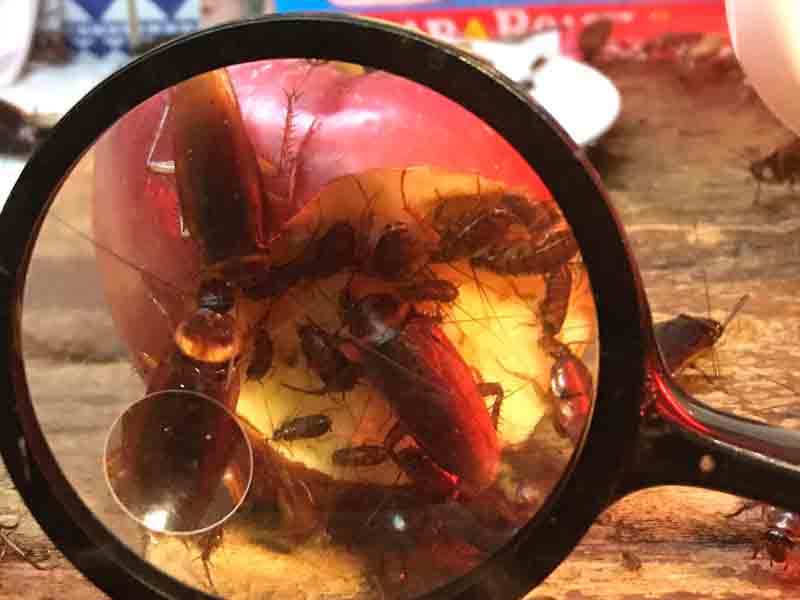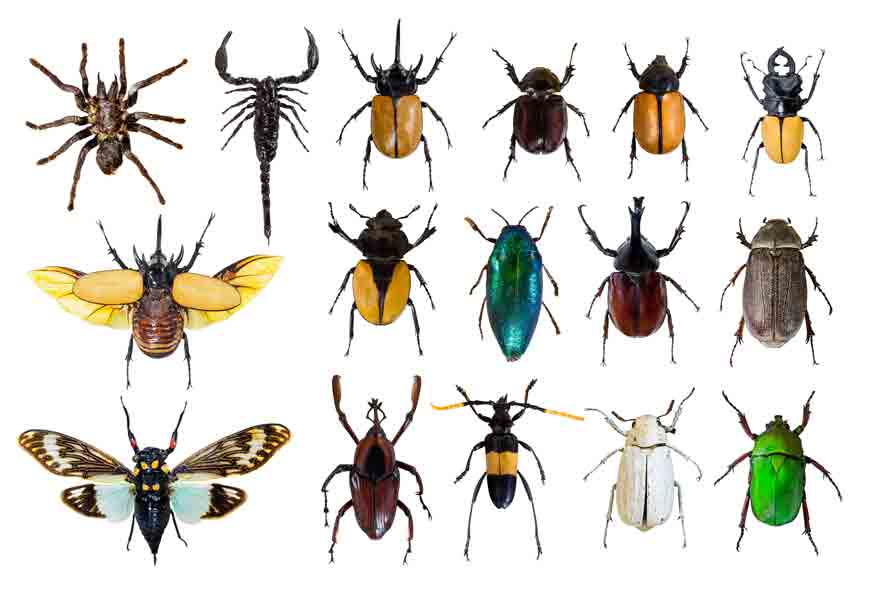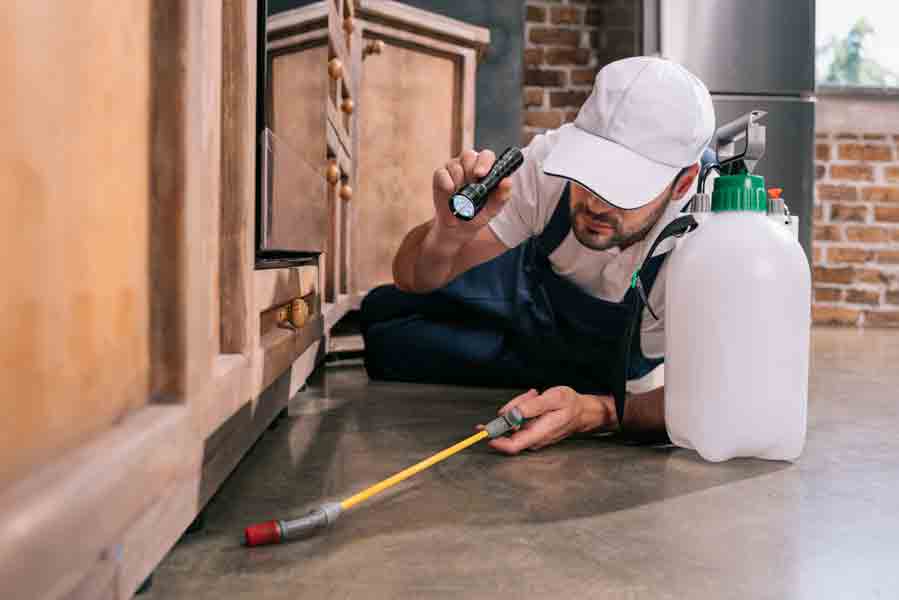Pests can be more than just a nuisance—they can pose serious health risks, cause property damage, and make your home unpleasant to live in. From ants and cockroaches to mice and termites, unwanted guests can quickly become full-blown infestations if left unchecked. Homeowners must prioritize pest control and proactively prevent and manage pest problems.
Understanding Common Household Pests
The first step in effective pest control is knowing your enemy. Some of the most common household pests include:
- Ants: These social insects can invade homes for food and water. They can contaminate food and damage property, and some species, like fire ants, can deliver painful stings.
- Cockroaches: Known for their resilience, cockroaches can trigger allergies and asthma and spread diseases like salmonella and E. coli.
- Termites: Often called the “silent destroyers,” termites can cause extensive structural damage to homes by feeding on wood.
- Rodents: Mice and rats can chew through wires, spread diseases, and contaminate food with droppings and urine.
- Bed Bugs: These blood-sucking insects can cause itchy bites and are notoriously difficult to eliminate once they infest a home.
Signs of an Infestation
Catching pest problems early is key to preventing them from escalating. Here are some warning signs to watch out for:
- Seeing live or dead pests around your home
- Finding droppings, egg casings, or nests
- Noticing gnaw marks or holes in walls, floors, or furniture
- Hearing scratching, scurrying, or buzzing noises, especially at night
- Spotting wings or body parts near windows or doors
If you notice these signs, it’s time to take action before the infestation worsens.

Preventive Pest Control Measures
The most effective way to control pests is to prevent them from entering your home in the first place. Here are some proactive steps you can take:
Seal Entry Points
Pests can enter homes through even the tiniest cracks and crevices. To keep them out:
- Inspect the exterior of your home for any gaps, holes, or damage, and seal them with caulk, steel wool, or wire mesh.
- Install door sweeps and repair damaged screens on doors and windows.
- Keep tree branches and shrubs trimmed away from your home’s exterior.
Eliminate Food and Water Sources
Pests are attracted to readily available food and water. To make your home less appealing to them:
- Store food in airtight containers and keep your kitchen clean and crumbs-free.
- Fix leaky pipes and faucets, and wipe up any standing water.
- Keep your garbage in sealed bins and take it out regularly.
Reduce Clutter and Hiding Spots
Pests love to hide in dark, cluttered areas. To reduce potential harborage sites:
- Keep your home tidy and clutter-free, especially in storage areas like basements, attics, and garages.
- Store items off the floor and away from walls.
- Regularly vacuum and sweep floors and clean behind appliances.

Maintain Your Yard
Your yard can be a breeding ground for pests if not properly maintained. To keep outdoor pests at bay:
- Mow your lawn regularly and remove weeds and dead vegetation.
- Avoid overwatering your lawn and garden, as excess moisture can attract pests.
- Keep firewood and building materials stored away from your home’s foundation.
Professional Pest Control Services
It’s best to call in professionals for severe or persistent infestations. Pest control companies have the expertise, tools, and products to effectively eliminate and prevent pests from returning. When choosing a pest control provider:
- Look for a licensed and insured company with experience treating the type of pest you’re dealing with.
- Read reviews and ask for references to ensure they have a good track record.
- Make sure they use Integrated Pest Management (IPM) techniques, which focus on prevention and environmentally friendly solutions.
A professional pest control service can develop a customized treatment plan based on the type and extent of your infestation, as well as provide ongoing maintenance to keep pests away for good.

DIY Pest Control Methods
For minor pest issues, there are some DIY methods you can try before calling in the pros:
Natural Remedies
- Use essential oils like peppermint, tea tree, and citrus to repel insects.
- Sprinkle diatomaceous earth, a natural powder that dehydrates insects, around entry points and infested areas.
- Set out traps baited with sugar water or fruit to catch flies and other flying insects.
Store-Bought Products
- Use sticky traps or bait stations to catch and kill crawling insects like ants and roaches.
- Place rodent traps baited with peanut butter in areas where you’ve seen mice or rats.
- Apply insecticide sprays or dusts according to the label instructions, taking care to avoid contaminating food or exposing children and pets.
Keep in mind that DIY methods may not be as effective as professional treatments for severe infestations, and some products can be harmful if used improperly.

The Importance of Regular Monitoring and Maintenance
Pest control is an ongoing process, not a one-time event. To keep your home pest-free over the long term:
- Regularly inspect your home inside and out for signs of pests, paying extra attention to kitchens, bathrooms, basements, and attics.
- Keep up with preventive measures like sealing entry points, cleaning, and maintaining your yard.
- Schedule regular visits from your pest control provider to catch any new infestations early and adjust your treatment plan as needed.
By staying vigilant and proactive, you can prevent pest problems before they can take hold.
The Role of Sanitation in Pest Prevention
Proper sanitation is a critical but often overlooked aspect of effective pest control. Pests are attracted to food, water, and shelter, all of which can be readily available in a dirty or cluttered home. By keeping your living space clean and tidy, you can make it much less appealing to unwanted guests.
Start by establishing a regular cleaning routine that includes:
- Wiping down counters, tables, and other surfaces after meals and food preparation.
- Washing dishes and putting away food promptly, rather than leaving them out overnight.
- Regularly sweeping, vacuuming, and mopping floors to remove crumbs and debris.
- Cleaning and disinfecting garbage cans and recycling bins to eliminate odors that can attract pests.
Pay special attention to areas where pests are likely to hide or breed, such as:
- Under and behind appliances like refrigerators, ovens, and dishwashers.
- Inside cabinets, drawers, and pantries where food is stored.
- Around plumbing fixtures and drains, especially in bathrooms and kitchens.
In addition to regular cleaning, practice good food storage habits by:
- Storing dry goods like flour, sugar, and cereal in airtight containers with tight-fitting lids.
- Keeping fruits and vegetables in the refrigerator or in sealed containers on the counter.
- Avoiding leaving pet food out for extended periods, and cleaning up any spills or crumbs promptly.
Finally, be mindful of clutter and excess storage, which can provide hiding spots and nesting materials for pests. Regularly go through your belongings and donate or dispose of items you no longer need, and keep storage areas organized and tidy.
By prioritizing sanitation in your pest control efforts, you can create a cleaner, healthier living environment that is much less hospitable to unwanted guests.

The Environmental Impact of Pest Control
When implementing pest control measures, it’s important to consider the potential impact on the environment and non-target species. Many traditional pesticides and insecticides contain harsh chemicals that can harm beneficial insects, wildlife, and even humans if used improperly.
To minimize the environmental impact of pest control, consider using Integrated Pest Management (IPM) techniques. IPM is an eco-friendly approach that focuses on prevention, monitoring, and targeted control methods to manage pest populations while minimizing environmental risks.
Some key principles of IPM include:
- Biological control: Using natural predators, parasites, and pathogens to control pest populations. For example, ladybugs can be released to eat aphids on plants.
- Cultural control: Modifying habitats to make them less attractive to pests. This includes crop rotation, companion planting, and proper sanitation.
- Physical control: Using barriers, traps, and other mechanical devices to exclude or remove pests. For example, installing screens on windows and doors can keep flying insects out.
- Chemical control: Using pesticides as a last resort, and choosing products that are least toxic and most targeted to the specific pest. Always follow label instructions carefully and avoid overuse.
When selecting pest control products, look for options that are labeled as “eco-friendly” or “natural.” These products typically contain plant-based ingredients like essential oils or biological pesticides derived from bacteria or fungi.
If you do need to use chemical pesticides, take steps to minimize their impact on the environment:
- Apply them only in targeted areas where pests are present rather than broadcasting them over a wide area.
- Avoid spraying on windy days or near water sources to prevent drift and runoff.
- Dispose of unused products and containers properly, following local regulations for hazardous waste.
By adopting an environmentally conscious approach to pest control, you can effectively manage pest populations while minimizing harm to the ecosystem and protecting the health of your family and community.
The Bottom Line
Pests may be an inevitable part of life, but that doesn’t mean you have to live with them in your home. By understanding the types of pests you’re dealing with, implementing preventive measures, and using effective pest control strategies, you can keep your home pest-free and enjoy a healthier, more comfortable living environment. Whether you choose to tackle the problem yourself or enlist the help of a professional, the key is to act quickly and consistently to keep pests at bay

